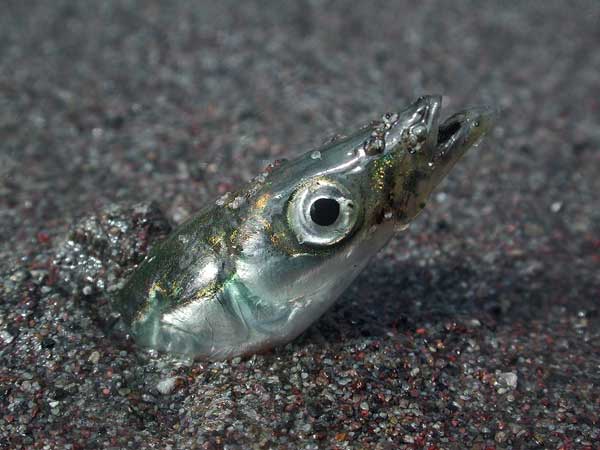This skinny little fish burrows tail-first into the sand to anchor itself against strong tides and protect itself from predators at night. During the day, big schools of Sand Lance venture into open water. Sand Lance can grow 8 inches long. They mostly eat copepods, which are tiny crustaceans, some like little shrimp, that graze on even tinier floating plants.
Unlike herring and smelt, their similar cousins, Sand Lance stay mostly near the bottom and so don't need a swim bladder for floating higher. Their eyes can rotate independently like a gecko's or a flounder's, giving them an excellent view around and above.
Like smelt, Sand Lance spawn on sandy beaches. From about November first to mid-February they lay many tiny eggs, each about the size of a sand grain. A sticky coating attaches the eggs to sand making them almost invisible on the beach. Around Puget Sound this camouflage kept scientists from discovering Sand Lance eggs until 1989.
Along with herring and smelt, the Sand Lance is an especially important species in the category we call forage fish. It provides the Chinook salmon with its most favorite meal. The presence of these little fish in Puget Sound is crucial to the survival of salmon, other large fish, marine mammals, and sea birds.
Sand Lance depend on the right kind of beaches for spawning and on clean water, as do all marine creatures. If you own shoreline property, consider becoming a Shore Steward and learning what you can do to help Sand Lance survive and thrive. For information, go to shorestewards.org.

